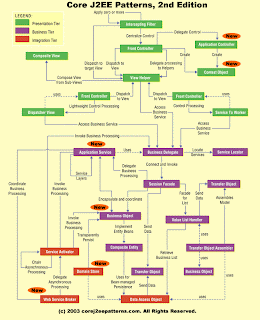Definition of Design Patterns
A design pattern is a general reusable solution to a commonly occurring problem within a given context in software design. A design pattern is not a finished design that can be transformed directly into source or machine code. It is a description or template for how to solve a problem that can be used in many different situations. Patterns are formalized best practices that the programmer must implement themselves in the application.
Extracts of the exact classification of Design Patterns
Design patterns were originally grouped into the categories: creational patterns, structural patterns, and behavioral patterns, and described using the concepts of delegation, aggregation, and consultation. For further background on object-oriented design, see coupling and cohesion, inheritance, interface, and polymorphism. Another classification has also introduced the notion of architectural design pattern that may be applied at the architecture level of the software such as the Model–View–Controller pattern.
Link of important design patterns with examples http://www.javacamp.org/designPattern/index.html
Design patterns reside in the domain of modules and interconnections. At a higher level there are architectural patterns that are larger in scope, usually describing an overall pattern followed by an entire system.


